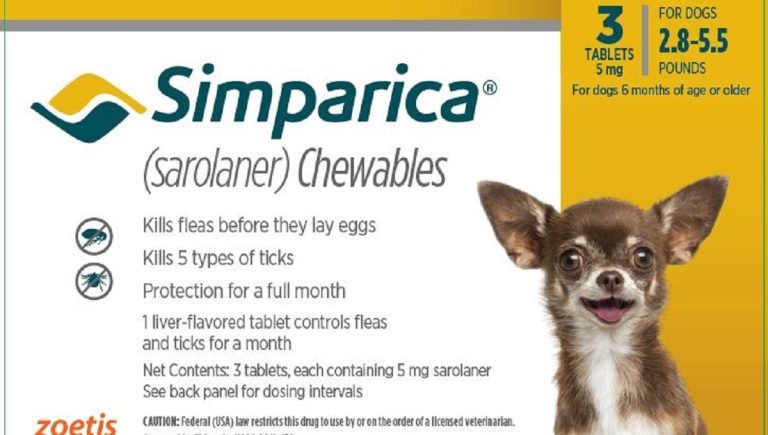Are Acers Poisonous to Dogs?
Acer trees, also known as maple, are not generally poisonous to dogs. Some species, like the red maple, can be harmful if ingested in large quantities.
Maple trees are a common sight in many landscapes, cherished for their beautiful foliage and shade-providing canopies. Dog owners often enjoy these serene environments with their furry companions without worrying about the safety of their pets.
It’s important to recognize that while most acer trees pose no significant threat to canines, caution is warranted with certain species.
For example, the red maple (Acer rubrum) leaves, particularly when wilted, contain toxins that can lead to red blood cell damage in dogs if consumed in large amounts. This can be a rare but serious condition known as hemolytic anemia.
Keeping an eye on your dog during autumn walks, when leaves are abundant on the ground, is a wise precaution to ensure their safety and well-being.
Are Acer Trees Poisonous To Dogs?
Dogs often surprise us with what they may find appetizing. Nature can pose hidden threats to our furry friends. The question of whether Acer trees are dangerous to our canine companions is not straightforward.
This is essential for dog owners to consider when adding to their gardens or during walks in the woods.
Symptoms Of Acer Tree Toxicity
If your dog has been around Acer trees, monitor them for signs of illness. Early detection could make all the difference. Dogs may exhibit various symptoms if they ingest parts of the Acer tree:
- Vomiting: One of the first signs of poisoning.
- Diarrhea: It could range from mild to severe.
- Abdominal pain: Watch for unusual whining or reluctance to move.
- Lethargy: A sudden lack of energy is a red flag.
Not all symptoms are immediate, but do not hesitate to contact a vet if you notice any unusual behaviors post-exposure to Acer trees.
Common Acer Varieties To Watch Out For
Various Acer species may be found in gardens and public spaces. A few common varieties pose more risks for dogs:
| Common Name | Scientific Name | Risk Level |
|---|---|---|
| Red Maple | Acer rubrum | High |
| Silver Maple | Acer saccharinum | Moderate |
| Sycamore Maple | Acer pseudoplatanus | Moderate |
Mind which plants adorn your yard and meticulously check the local parks where your loyal companion roams and plays. A safe environment ensures a healthy, happy dog.
Potential Health Risks For Dogs
Potential Health Risks for Dogs: When our canine friends encounter acers, commonly known as maple trees, we must exercise caution. While some maple trees are harmless, certain species like the red maple (Acer rubrum) can pose health risks to dogs if ingested.
Knowing the symptoms is crucial for a prompt response and ensuring the safety of our pets.
Gastrointestinal Distress
Dogs that chew on or ingest acer leaves or seeds may experience gastrointestinal upset. Look out for the following signs that may indicate your dog is in distress:
- Vomiting
- Diarrhea
- Lack of appetite
- Abdominal pain
These symptoms can arise shortly after ingestion. Seek immediate veterinary attention if you notice these signs.
Neurological Symptoms
In more severe cases, ingesting toxic parts of certain acer species may lead to neurological problems. Dogs may display
- Disorientation
- Seizures
- Weakness
- Changes in heart rate
Neurological symptoms require urgent care. Timely intervention is critical for recovery.
Hepatic Damage
Long-term exposure or large amounts of ingestion can result in hepatic damage, affecting the liver. Symptoms may not be immediate and can include:
- Jaundice (yellowing of the skin and eyes)
- Lethargy
- Vomiting
- Elevated liver enzymes detected through blood tests
Liver damage is a serious condition. Liver function tests may be required to assess the extent of damage.
Always keep an eye on your furry friend while outdoors and prevent access to potentially harmful plants. Contact a veterinarian promptly if you suspect your dog has ingested a hazardous acer plant.
Prevention And Treatment
Keeping your furry friends safe from potential dangers is paramount. Acer trees, common in gardens, pose a hazard to dogs.
Understanding how to prevent access and handle possible ingestion ensures the well-being of your pet.
The following sections address key steps to safeguard your dog and provide essential treatment information.
Keeping Dogs Away From Acer Trees
- Secure the garden area: Fences or barriers prevent dogs from reaching Acer trees.
- Use dog-repellent substances: Non-toxic sprays can deter dogs from the trees.
- Regular supervision: Never leave dogs unattended in areas with Acer trees.
- Train your dog: Teach commands like “leave it” to stop them from chewing plants.
Immediate Actions If Ingestion Occurs
React quickly if you suspect your dog has eaten any part of an Acer tree. Swift action can minimize risks.
- Remove any plant material: Gently take any leaves or seeds out of your dog’s mouth.
- Observe your dog: Look for signs of discomfort or illness.
- Contact your vet immediately: Time is critical for your dog’s health.
- Provide details to the vet: Explain what your dog ate and how much.
Keep a sample of the plant ready. Your vet may need it to determine the best treatment.
Other Common Garden Plants Toxic To Dogs
When creating a dog-friendly garden, it’s critical to know which plants pose risks. Surprisingly, some of the most popular garden plants can harm our furry friends.
In this guide, we’ll explore other common plants that could be dangerous to dogs.
Rhododendron
The beautiful Rhododendron is a common sight in gardens. Despite its allure, it contains toxins that can cause serious health issues in dogs.
Symptoms of Rhododendron poisoning are vomiting, diarrhea, drooling, and weakness. It is essential to keep these plants out of your dog’s reach.
Lilies
Lilies are widely loved for their vibrant blooms and sweet scent. However, be aware that certain lilies are extremely poisonous to dogs, particularly:
- Easter Lilies
- Tiger Lilies
- Day Lilies
If a dog ingests any part of a toxic lily, immediate veterinary attention is needed. Symptoms include lethargy, vomiting, and kidney failure.
Sago Palm
The Sago Palm is favored for its exotic look. Yet, it’s one of the deadliest plants for dogs, with all parts being toxic, especially the seeds.
Eating just a small amount can cause liver failure and, in severe cases, death. Watch out for vomiting, diarrhea, and seizures as signs of Sago Palm poisoning.
Besides the above, there are more toxic plants to consider:
| Plant Name | Toxic Parts | Symptoms of Poisoning |
|---|---|---|
| Oleander | All parts | Heart issues, tremors, vomiting |
| Cyclamen | Roots | Vomiting, diarrhea, heart rhythm issues |
| Yew | Foliage, seeds | Difficulty breathing, tremors, vomiting |
Being proactive about plant safety can help prevent emergencies. Keep poisonous plants out of reach or choose pet-friendly alternatives.
Your dog’s health relies on a safe and happy home environment.
Creating A Safe And Dog-friendly Garden
Pets are family, and just like any family member, their safety comes first. Dogs love to explore gardens, but not all plants are safe for them. Acer trees, for example, can be harmful to dogs if ingested.
Crafting a garden that both you and your furry friend can enjoy requires careful planning. Let’s dive into how to design an outdoor space that is beautiful and dog-friendly.
Landscaping With Non-toxic Plants
Choosing the right plants is crucial for a pet-friendly garden. Start with a list of non-toxic options that are safe for dogs. Include plants like asters, camellias, and honeysuckle.
Steer clear of lilies, sago palms, and azaleas, which are dangerous for dogs.
- Asters
- Camellias
- Coral Bells
- Creeping Rosemary
- Honeysuckle
Supervision And Training
Supervision is key in a dog-friendly garden. Always keep an eye on your dog when they’re outside. Training is equally important to teach them what’s off-limits.
Remember, your dog’s safety is the top priority. With the right plants and proper supervision, you can create a garden that’s a safe haven for your four-legged friends.
Frequently Asked Questions
Are Japanese Maple Trees Poisonous To Dogs?
Japanese maple trees are not toxic to dogs. These trees pose no known health risks to canine companions when ingested.
Are Acer Trees Poisonous?
Acer trees, commonly known as maples, are not poisonous. They are safe for both humans and pets.
Is Red Maple Bark Toxic To Dogs?
Red maple bark is not toxic to dogs, but leaves, especially when wilted, can be harmful, causing red blood cell damage.
Are There Any Poisonous Maples?
No common maples are poisonous to humans, but the red maple (Acer rubrum) can be toxic to horses if they consume wilted leaves.
Can Dogs Eat Acer Leaves Safely?
Acer leaves are generally not safe for dogs to eat. Ingestion can lead to gastrointestinal upset or more severe symptoms depending on the species.
Conclusion
To wrap up, acer plants pose potential risks to our canine companions. Vigilance is key when dogs are near these trees. For their safety, it’s best to prevent any contact.
Should an incident occur, prompt veterinary attention is crucial. Always prioritize your dog’s well-being and enjoy a worry-free environment together.


